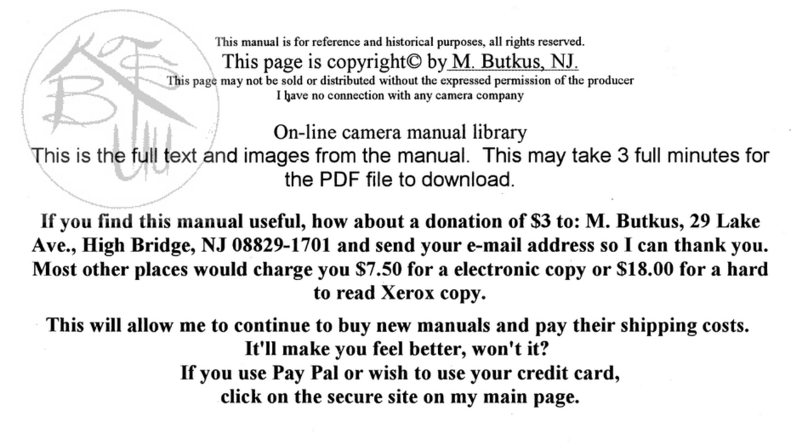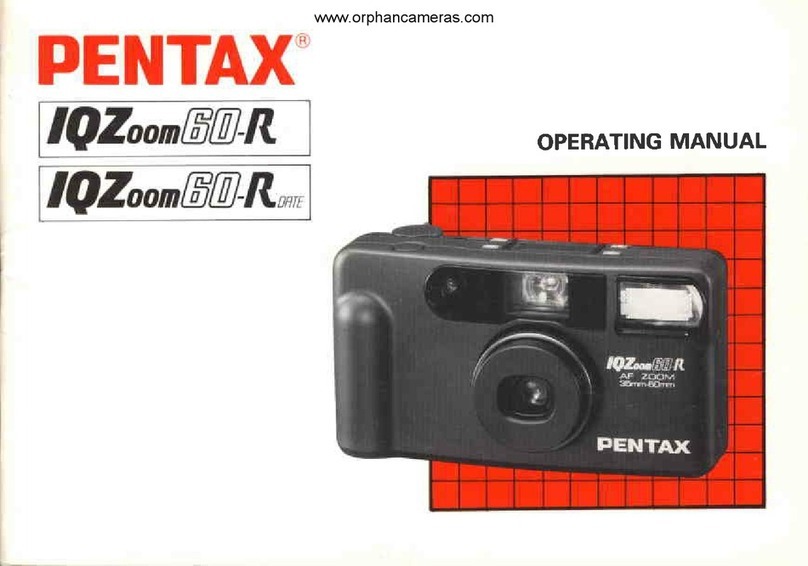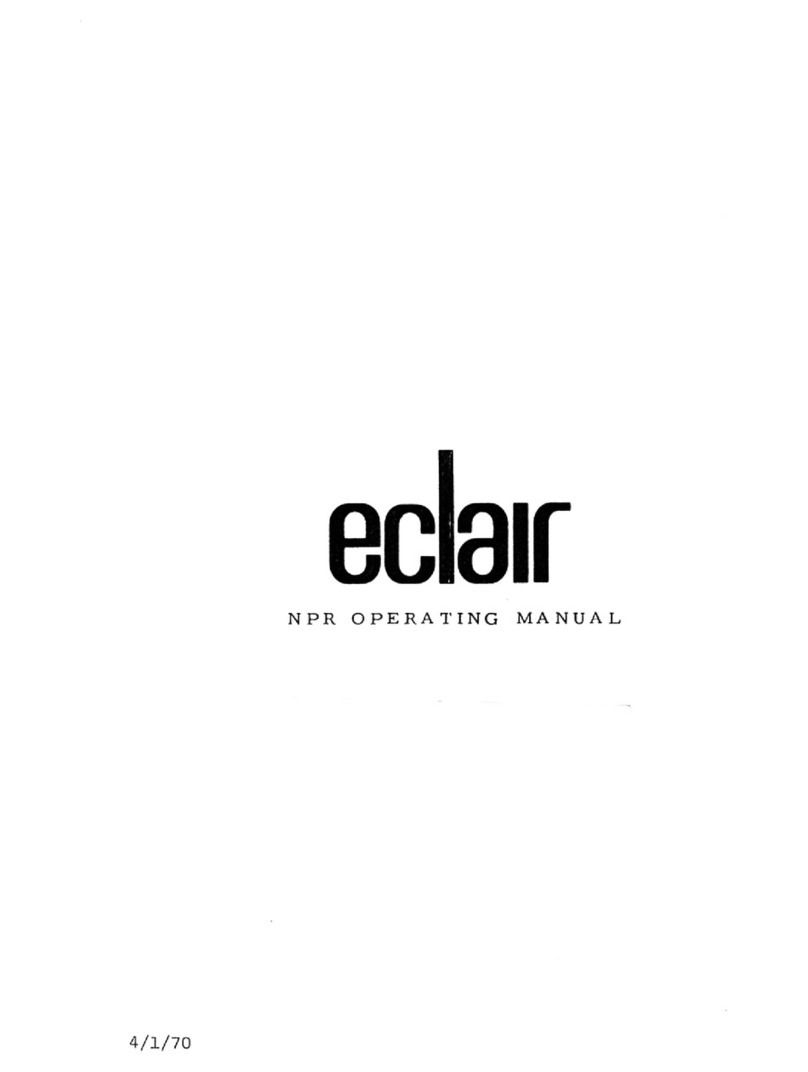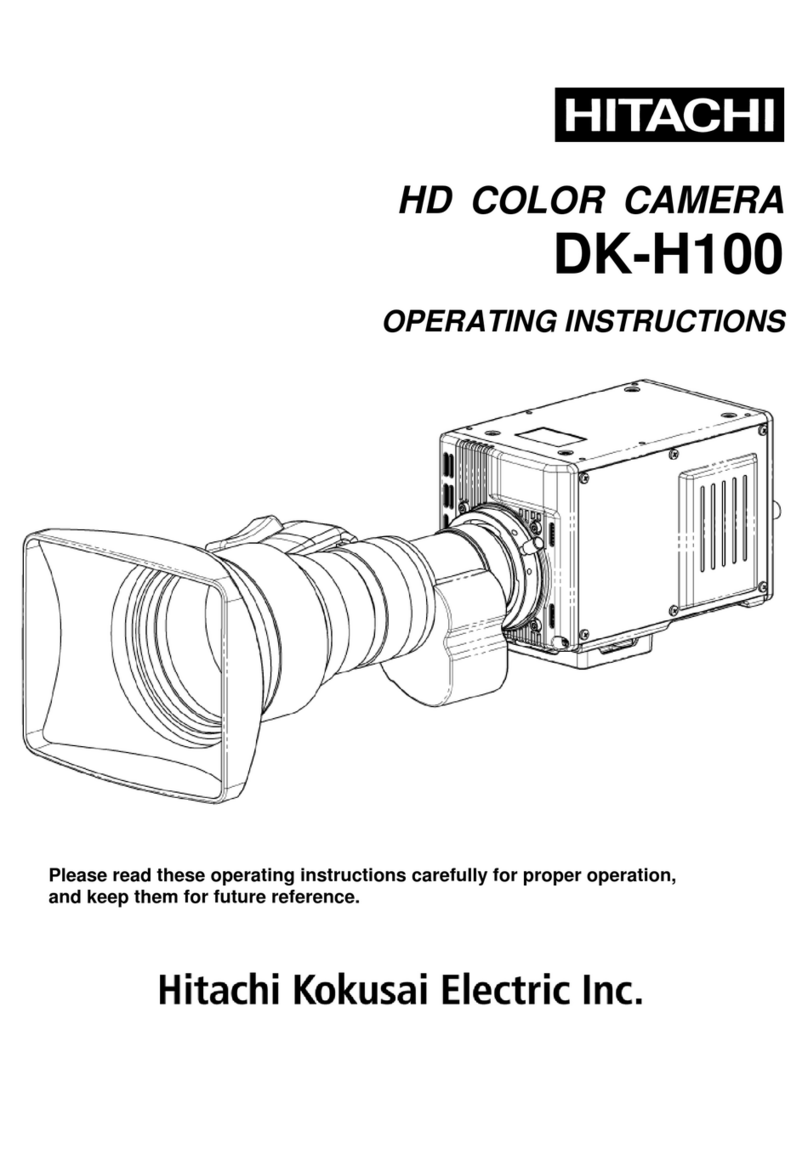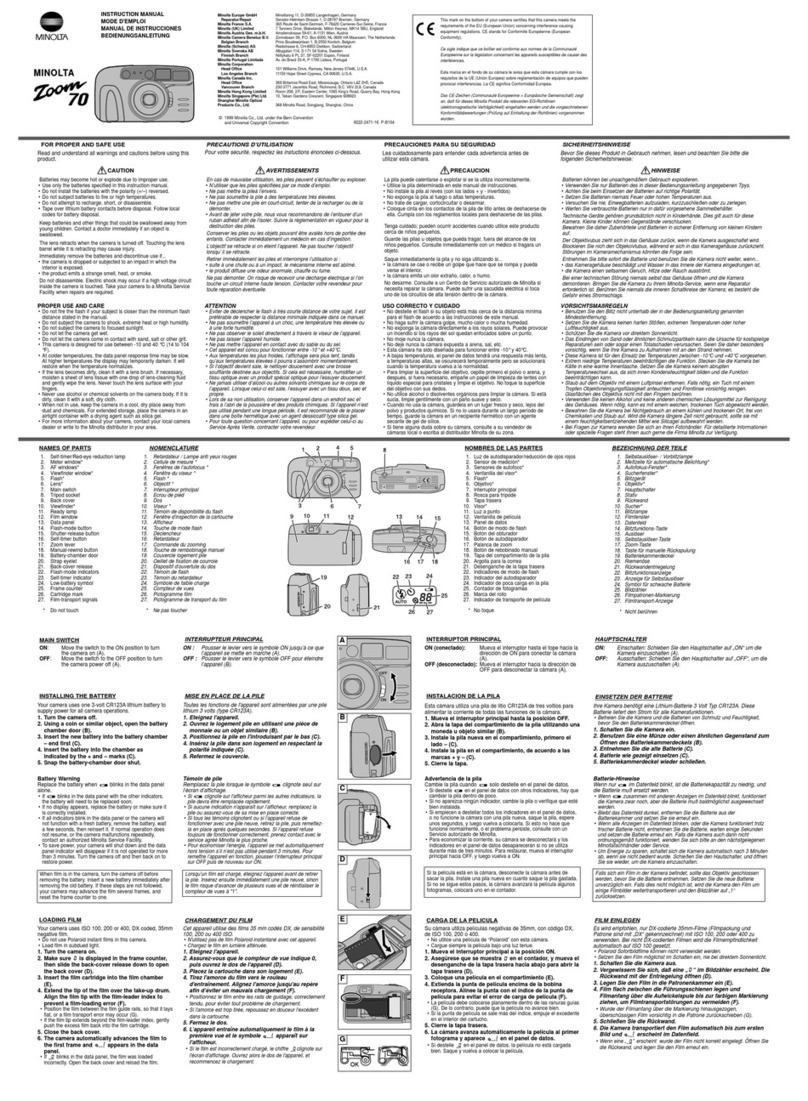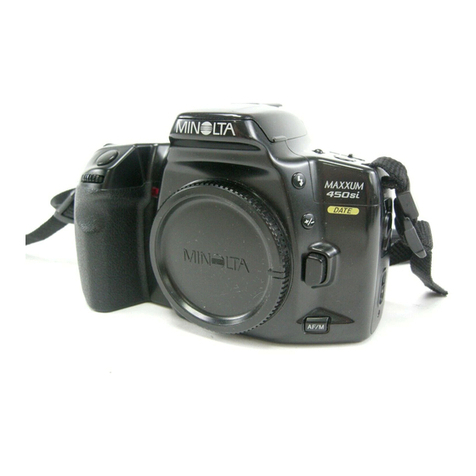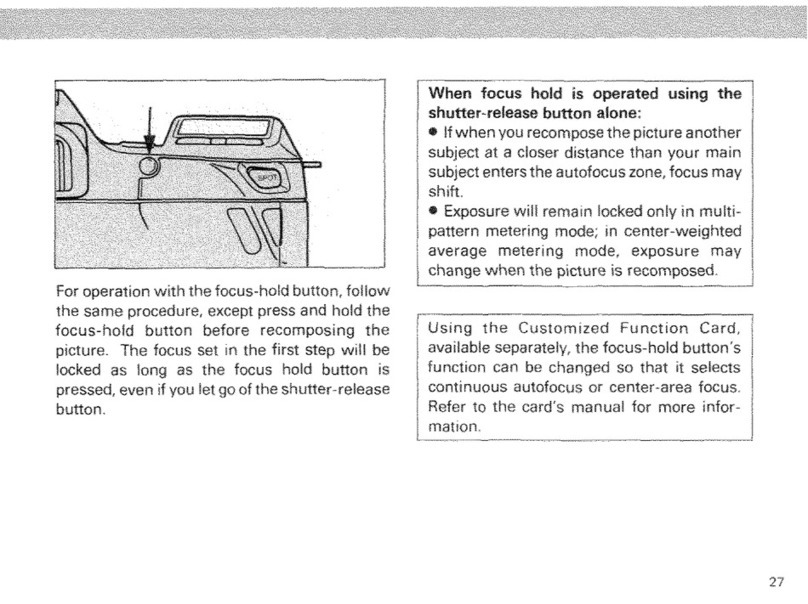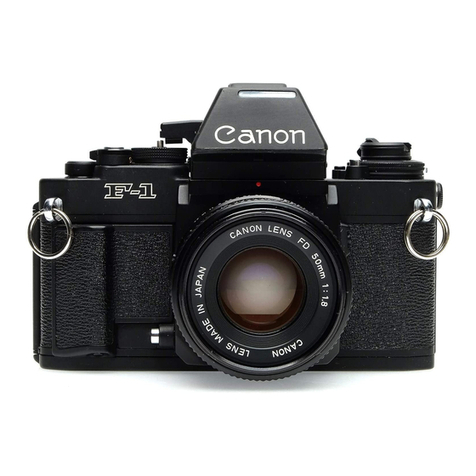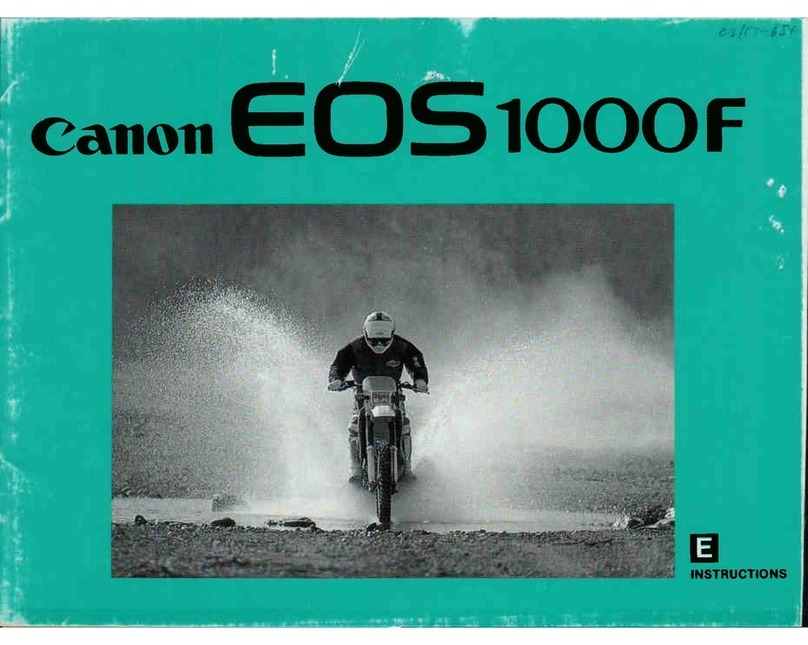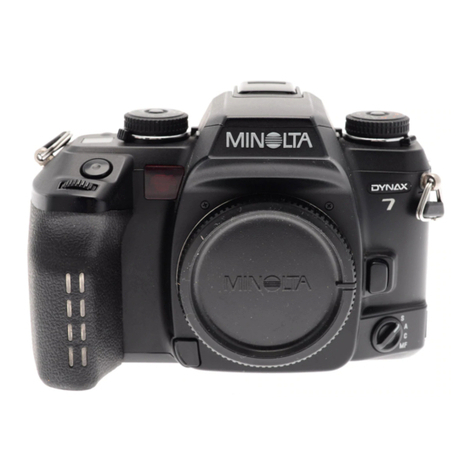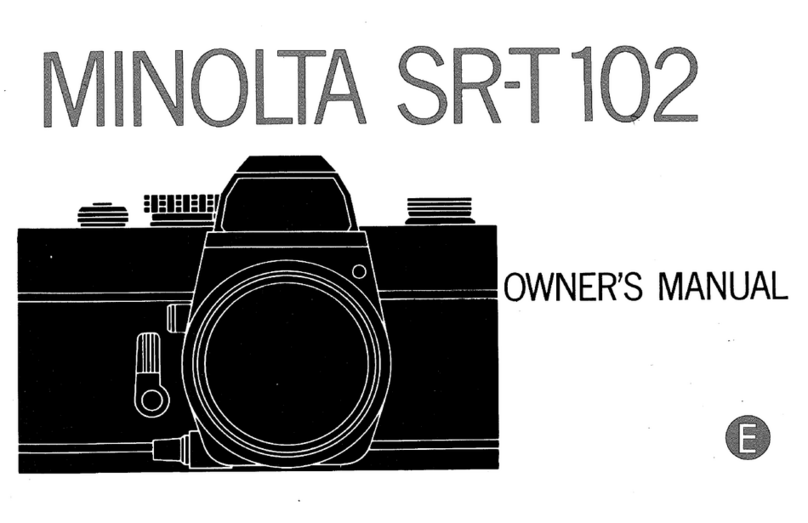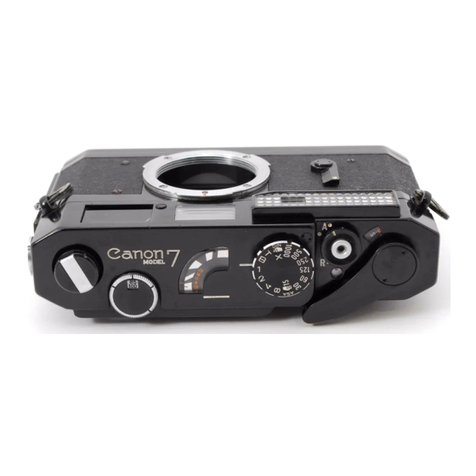Toyo TV45GII User manual

TOYO-YTE
45G
5TG
ffi!EG
45G
ffiIEffi
INSTRUCTION
MANUAL
www.orphancameras.com

f)HL)-h(,J[:ffit(
Io)/;()l* t-=
'Cz-G >D-;{h /'= &6H
Lt.E.lJLrtt'8.*.L L:6)L)15\L
- J'au. *d"
l-
= ' Cz -45cI1
. 57cn. 810c[
t* F
=0)
f;+E*Lf$if,iUF t FR
t:t i' t-< HIF t-t;ftF'ffi.
)771',Cz--h t =7. ffie AJrtH
t
:H *tE r[I
tffiL'f;&gl3{#+E
T).l.eAFE{tt tJ
/d
L'. 'a
fifrl#
t-;di: L ttJELt*
&# c <ai LJ
* d"
* t .F Vlc|,l?Ttt'tr:L * L <{,*.€U{f
Htr AE
eEL
Ltrilq. 6#frftn1d.h /' = 2-, .
iB
6 h'.ttlF-IF
7 1-) >). /\- F'/d.If;ffi
At;e>L.Edl€L
f-elPl*.h\+t .'rEE4
L
r
tt'rJ 6 t 1+Li* d.
d 5t:. -F t t;) 77At-t : (ffifiF*ljE
L
<fjt, *do)T . v ttt) -*Ft-E*F,Eb\6
rJ
.
#i+++60 | =+sb\€frr.;EH L(Lrt
/j'[J*q.
.) tr:t l-3
A*+E&+-7)'L
.
F= ' Cz - c
> t)- ^h /,=at#a7z) )vl_-'tEHu
r/./;'(
tdDt- . . ory L-)*N.trEH,EE€t
-fEEfi
( t'd rr
*dt )AiF.FL\+
LtrJ*d"
INTR(lDUCTI(lN
Congratulation
- on becoming
the owner
of
a Toyo G SeriesView camera. Your Toyo
View is a sophisticated
systemview camera,
carefully designed,
crafted,and tested,
and
following manipulateability
and increasing
capability from previous models by using
our long
experience
andadvanced
technology
of largeformat
camera
production.
In addition the interchangeability
with the
present system, the new system has been
developedto spread
the camerafrom 4 x 5,
5 x 7 upto 8 x 10inchformats,
that is
to say
models
Toyo View45GII,
57ctr and81Octr.
Individual mechanisms
have achieved pre-
cisely machining
with selected
materials
in
order to operate
extremelysmoothness
and
to increasedurability. The appearance
provides
an excellent
finish suitablefor its
highest
quality.
The following pages
will review
basic
opera-
tion and
will explain
the purpose
and
the
use
of many of features
built into the camera.
To use your camera most efficiently we
recommendthat the instructions
arecarefully
read.
il
t
il
,a!i*:i$s.- .r.

o)) F11
12
13
14
15
.74 )Vl
ot.4>t..
@
cx t-?L\<
Component
Parts "":"' "'1 - 4
Basic
Operation """" 5
OTripod MountingBlock
(DExtension
Monorail.. .....
6
(.3)Changing
the Lensboard,
BellowsandCameraBack ...'...7
o ToyoView 45GII
and
57GII ""'7
o Toyo View 8lOGII
o GroundGlass
Protection
Boardfor81OGII' B
I
Q,rFocusing
(5)Camera Movements
o Rise
and Fall
10
11
11
4F
15
@ toyo View GX
O Base Tilt
O Depth of Field Calculator "' 16
(ECamera
Back """" 11
o Revorvins
"":':'::""":::::'::::::"' .....17
o FilmHolder
Set
Up ..... .......'18
o U
niversal
Back ...'.......19
o ViewingScreen ...........21
@Focusing
Hood .......-23
@Beffows
""' ...'.......24
@Spirit
Level .'.........25
OTo Attachthe
Collapsible
Lens
Hood-Optional
Accessory--...-25
Format
Converting
System ........26
Flange
BackDimensions
with Various
Accessories
Combination
lf
Accessories
to Increase
CameraPerformance.. ........29
(f Lensboards
andAdaptors .'.'.29
@Monorail
'.... ........29
€)Bellows
""' ...........30
G)Ouick
RollSliders
tr..... ...........91
@Reducing
Adaptors
".... ...........31
@Sub
Frame. ..........'32
@Collapsible
LensHood
G .... ....,32
@Focusing
Accessories
tor 4 X
5 Forma( ..... .......,33
eFilnr Holders .......,33
(E
nott
Fitm
Hotders ........34
Specifications ........36
www.orphancameras.com

aEBozffi C(IMP()}IE}ITPARTS
4;5Gm
=1/7r-)V
Rise Reference Scales
7< )VFE'yiY?S
TiltLocking
Knobs
i1/.}y)Y=i
RiseLocking
Knobs
=1v>i)7
Rising
Knobs
>)l)7
Shifting
Knob
Et+6'yv=
Tripod
BlockLocking
Knob
ft+e 45c.
57c
TripodMountingBlock
CatNo.8008OBSG
7zr-h!25 ) 7
Microfocusing
Knob
ttt a
Rise
Posts
7_FWfiHfi{ F
LensHoodPositioning
Sockets
V)ttU-)z--
Accessory
Shoe
TkflB
Spirit Levels
{li t
Rise
PostL.H
v>J.^-t-
Lensboad
CatNo 10101
LBVG
71)jE'v)Ut\-
Swing LockingLever
>) F7r-)v
Shift Reference Scale
71>'r7r-)V
Swing Reference
)t-h)2i7r-)v
Microfocus Reference
Scale
Scale
=)l-,-)V 25O
Basic
Monorail
250
Cat.No 10106
OBB250R
*t'v7Yv=
End Cap
)zr-hzo'>)vt\-=
Microfocus Locking Lever

HiiI+
45GII
Front Standard
CAtNO
11403FF4SGII
71)vt-7r-)v
Tilt Reference Scales
7il FE'y)l-,t\-
Fastfocus Locking Lever
1*.++
45Gn
Rear Standard
Cat No 11404 FA45GII
)-Fffi?Af^g>
Hood Release Latch
)zr-h)))7-l-' 45MB
Focusing
Hood
Cat No.2006
FH45MB
h>rj)\v) a5G
Camera
Back
Cat No.8005
CB45G
tEFT
,t
L/-)v
2SO
Extension
Monorail
250
Cat
No
1
01
07
OBE250R
www.orphancameras.com

STGM Cat
No
8105
CB57G
1*t+ 57Gn
Rear Standard
CatNo 11504
FASTGII
#F#r'rl\t 57c
Standard Bellows
Cat No8102BS57G
h/.)\'rt 57c

)t/.j,t\'y) SIOG
Camera Back
Cat No.8205
CB810G
rf# 810ctr
Rear Standard
Cat
No 11604
FA810GII
H+Ytl\= 81oG
Standard
Bellows
Cat No.8202
BS810c
--2
tt+A 81oc
Tripod
Mounting
Block
Cat
No.8208
OBSBG
ffi[EGM
N
LEeUt[A6"r[€tfit*45
cut tE]+fird" x The other component parts not qiven the caotions here ahovp havp thp carno n.rnac ac aEtzTr
www.orphancameras.com
www.orphancameras.com

EABlre'fFctfi BASIC
()PERATI()I{
t+6on vfI)t* (EHl l Oi at=h
/=1af &L)
H<EIA\t;lt+
e.y? = hYrtEi 6t ) t;E{.tt)<(/jd L
r. i;t+e of;BH,
ttffi* tt t;/d
cTt)L
). tfi7 fi AF
t
: &
L
)h/-
=P+0)
* Ful
.*t;I*ffi th.
AtrE Z;E*F
L* d.
*fch )L
=
a&fr ''lH
Stdft+6'vv =
Ato6O(&frMEL * C'
E TRIPOD
MOUNTING
BLOCK
Position
the tripod mountingblockwith its locking
knob at
the righthand
sideand clampthe monorail
asphoto. Since
hinged tripod block opens easily,
if necessary
replace
the
position
from the'centerto front or rearof the standard
in
order to permit balanced
mounting and easy
manipulation.
Loosen
the lockingknob and rotatethe camera
to compensate
for unevenness
of the tripod and to help bringthe horizon
to thelevel
point. (Photo
1)

2
wfit/ V
-)vDEnfr,
*d. Gtr=) t/-)r1)Ri€*r '>7"
tiIBEfl-
&r-)t/Ei,J{.B.'JO++;#
d)?L\(Lr5l*t'y?
=
Z@aT^L *d. )kt_*at ), _
)raffiih
L
6ah,)t.^._)
t 6lttlt-?L\(
L\5r> l-* v
.y7"tEaT^L. GJa
T
) ,- )r&tft|;.U.
L/-)rLElsA+-AffiE&Abt1(t*&)[a. GF
T
/ t/-)vD+*+'y?=
X@a<66f:trffff,tlJ#.1"
XLT#'^T ),
- )v
h,atIJf;t 2 t-* r'> i"
o)*lAlLaE
6++q*freLlt +'y? =
o)+
+o)',#&Ab€.T
. r> l'-* r 'y
)"&I,8,
t t-<i&(#,ffl.tlJ(TdL
r"
)tit,f.lh aGF= ), - ),
o)+*#,y
p =
{.8.r1
t
: t*r p Lt-({f ffi
t_
f:
r )
l-
* r .>
)'XLJ$T diL
r
(T dL
r, EH 2
t4t / ,- )vtaLJRt-itFT
/ r-)r&)/dtt5 j )(:6r (aiLJ
.
y oh )*.l*.+t T )' - )' L.2fd.
<"
tEA
LFJ
t-
Td,..... ftEFG
E t 4 ),
?fd[\T65GF= ) ,-)r&il-tr7Au, tE]txt;r>F.+
r,.y)"o)It
o)t3?lffa<. g<
ff* r (1,5'y?
=
&rr6$. &L*+Tta<tl
L(TdLr"
+A= ) ,- )rar> F.+\-'>7"1*ffiHftt$\t)*,a1*i9.
h/.++aI,i
EtshJLal?.E
LGtr=), - ),aftfrfJlJ.
H!
L)
rtaDrp t t_Tatitr&
ta(L
r
* d" GF
r ), - ),alR;E+
+,
.>
)'
tJy
a L/
- ),
ai#faf^*.
.t)*O{*;€
AlFeTd" EAt iEtrt,T
), - ),Ai#HafttX
t.+A1Eb\6
L-)*lL. l*f;frb\r3/d<
fiL)
*t,. T) ,- )r,ai#t.LJ
+16d)8+b
,j/.1
+r'>
)"
&t'y f-
L
(djLr(TdL r
.
2 EXTENSION MONORAIL
To attach the extensron
monorarl,
take off the cap at erther
end of the basrc
monorail Attach the connecting
end of the
extensron
monorarl
to the basrc
monorarl Turn the other end
of the extensron
monorarl
wrth the detached
cap as the end
accommodates the other srde of the cap, and then trghten
rt up to secure the monorail Mount on the cap to the end
after the sard
operation
rs achreved
To detach the extensron
monorarl,
use the same eno cao to
loosen
the extensron
monorarl
r)F**,,'y)'
End
Cap
t*+,y?:
Connecting Pinch
www.orphancameras.com

f;'':i'
@v>x
o l..f
.E:.-45GII o l.f 'E:.-57GII
D>^^- l--.
,'yl\-. h/-jt\'vDX
h /.^7 4&L)WL)*l L3t*t+o)l.Tt_
6 6ffi Ztffi&
ttfi FsL.
7. 4 l-.
d tttr'Ltdffiz-
z)\fi+Efdl'LH LJ
lJdt1 *d"
v>). h t-=)\'>r&wL)ilt t_atJ,rz.
dh.+-e
,>). *t]Jh /.=)\.y
jXtt
Z<t*1Fa<<t'd1,. tEH3l
,>^^_ Fr.
)y/\.. h/,j)\.yD&
WL)
ltLJ
6L 3tJ. P+OalYEBt:{€=
t*, >
f,'rh-
l--., p
)\.. h /.)\.y tXB$
IuTWL)IfLJT<t'dLt.
ry
LJ
{.f
tJ
/5\ft-(l-t; D'Y'dWlJItl}$ile
&
trE;8L(25'D
-{frH
( t'd L
r.
N
h/ =
)
\'y
t 45G
at7ew-fi Fsa
atuh'
wL)
ltLJ
Dn*-t h"a-e. ry
t-,,
ft0 arYa
{nE&nEEE
t-TW
L
)It LJ
T<t' d L
t
"
t ^ )vc>
) t t)
.>,
a^9 >
h\h
/-
=4k
fr&L)R.<E
LElSt:/d5t
) t-
L
*C.
(EH4)
E CHANGING
THELENSBOARD,
o TOYO VIEW 45cll and 57GII
To removeany of them, simply push
the top slide lock up and the bottom
slide lock down, then lift off while
holding the component by one hand
to prevent from accidentally
falling.
(Photo
3)
To install, position the col'nponent
into the groove of the square
frame
and push the slide locks into the
locked
position
securely.
x Becausethe lensboard
is square,
it can be placed
on the camera
in
BELLOWS
& CAMERA
BACK
any of four positions.
Thismeans
that the shutter speedand aper-
ture controls can be easily used
regardlessof camera
position.
However,the cameraback 45G -
Cat. No. 8005 CB45G with a
provision
for revolving
- canonly
be mounted in one
position
where
the revolving release button
locates at the top left corner of
the square
frame. (Photo
4)
www.orphancameras.com

. l''='E:.-8l0Gll
t-
= .
Er-
-8 10
cnAEAt*Hi++g[O
U
>]^- l-
. )t, /\. AHniih)*
t*. F
= .
L:--45 G[ . 57
cn Of*IFt I'J
tjTd6 . lkt#ESA)\, )\= . h
/i )\.y
taaF,tlh)*,75\F/drj
*d"
) r r\z 0)HL)
* l-L*t+A{HtJd)I
gti
t
- 6 6fr ZttE
&7 = -/ F.
d t1, ffiz_
&frfiL+t. ) y .'
\- t EB&I Z Uffih t,
-lEL)
TLfi fAt-
i+
b'tl At ) t: n
L)*1,*d" t5F5l
h /'=t\,y )AWU,|t tJt+.tElSt.F>AEAh
/-.t\.y tfrZ+F&E
h frit:. Eafr zi .E_
eEh FsL-
7 = -/ l-.
d t1( t r:ffi Lt rJhtdffii r\
ffi
Efd n . h /,=)
\.y2 &'!' UIELJ
T_LfiI: i+
b'tt 6 LT gBo)ffi
i/ \
+ t
qt[n. w.L)
tILT=*d. HL)lttJ
6ra5lt.fa**ff(d. t5E6 ]
. TOYO VIEW 81OG1I
changing procedures
of the bellowsand cameraback from the
Toyo View 810GII rear standard differ from that of the
4 x 5 model.
To remove
bellows,release
the top slide
lock andtip the beilows
slightly
forward,
then pull diagohally
upwards. (photo 5)
To remove
camera
back,
shift laterally
outwards
and
push
up to
release
the two locks where located at both sides
uppercorners
of the bellows
frame,
then pull the backdiagonalry
upwards
to
clear
the lower
catch
andremove
it. (Photo
6)
To install bellows and camera back, reverse
the above proce-
dures.
www.orphancameras.com

. l"
=' E:--8l0GII0)
,'-> t', - x*#ffi.aw., )
rlt-fi
) => | ) = 7P+Ov
t rt u
-+4
ztE
&7= 4 l-'
dtt
<*4
^&fr+FA
L(il L)
tla*d. |
1H7 )
O
GROUND
GLASSPROTECTION
BOARD
FOR
81OGII
The focusing
hood for 8 x 10 version
isnot avail-
able,
but provides
aground
glass
protection
board.
Push
the slide
lockandslip
the opposite
endcatch
out to remove. (Photo
7)
@;€2
h,ebtf
F
=.8 :--c>l -)at > l-abtll#,tf;tJ, +EL)Lv 4
t.) t -
hzD2) t4r.;l'l-rJ:(L\*d"
+r.J lJ7- 4 t--l
.>
rr)\-&fhL.litla<)r-+&f+wL. t++
1t&trt}*tJ*1kh1.7.4 F
dtl(, ^1t0)a'> FAbtl&lild'L\. z
.4 t-D'y)>t\-&lhht-freL(++&EE L*d" lSFBi
? 4 tz) ^-ht l*) t -hzo,v )I-,t\-25t5 t-^+*Tfre L(
n'> 2 &frfiW.L
) >r
- h >>D
) 7 &MU(E[€ /d
C
> | e bt Z L * d "
..>
tIt) t -ht z'v
),)\-&Tz.t:iEL(!'> t l,*d" t5F9 i
x fi'y t, )\- t
J'jl,gt)/
-E
t: tfi
<ft#
O
/d<L tr+ t' la7. 4 l-'
tdtt * tJ
*d.
o'> t dtr.Ltlif,E
T ) ) &lfr<iEd L7- 4 F-
t*+lr
A* db\. t 3/d,
h\-.>) .Y-t>tahnbq *dor-tiH< tdLr.

@ FocustNc
Toyo G Series
cameras
providethe fast and micro two way
focusing device. Push the fastfocuslocking lever of rear
standard
forward
to unlock,
and
slide
therear
standard
forward
or backward
onthe
monorail
until
the
subject
comesinto
focus.
It may also
be necessary
to move
thefront standard.
Relock
the fastfocus
locking leverwhen the image
appears
sharp.
(Photo
8)
For critical focusing,
loosenthe microfocus
locking rever
forward
and
turn themicrofocusing
knob. The
rack
and
pinion
focusing
allows
anextremely
precise
control. Relock
the rever
downwards
to lock. (Photo
9)
x Tighten
the locking
levers
firmly, but do not overtighten.
Excessive
forceis not required
to holdan image
in sharp.
Toyo G Series'
locking deviceapplysa locking force
directly onto the standard
in order to eliminate
any
mechanical
tolerance
which may affect to precise
focus.
Do not,therefore,
attempt
to focus
with the lever
locked.
Microfocus
may be travelled
because
of the large
dia-
metered
focusing
knobapplys
amultiplied
torque
onto
the
small
pinionand plastic
rack
which
maydamage
either
of
them.
www.orphancameras.com

a
Vtt)Olfir\fr
.-4 7.7t-)V
o
l--
=' E-:--
c
>t)
-)A. 4
)' ) t - )vlJF=O*+FT66.'>
t'
a=t >h *.7 7t^_7TEtr€
/d+f;
trd)iE+R
b\T3 * E.
.R{EIJE6L.66.4}.'> )'r? =
tEE+=+tHt-iE
L(! .>
t&fr+
r^a. . 4)>) ) )t.& )TRIEL*d. =
4)>),) )Li. f,)efit
t.aT6, *laT, LbDft,,iE+ff
aTt*IFL(< t'dLt. i
5H10
l
'','t\'y)ES.
,>)^- l-'Ellt:Et\ba&t
'v
FL(J{ftffiOL3tJ.-
4^.'> t,v?= aig
L++<
) >-+xh\J . EE(f+b\TD/dt\&
)
L.t
6L{Ff
U(d.
5 CAMERA MOVEMENTS
O
RISEAND FALL
By means
of - a traditional
feature
of Toyo View - rack and
pinion controlledrise
and fall movements
permit smooth
and
accurate
determination
of composition. Compose
the effect
on
the ground glass
by turning the rising
knob or knobs after
loosen
bothsiderise
lockingknobs
to counter-clockwise.
A slighttightening
the lockingknobs
to apply
friction
isrecom-
mended to prevent gravitating when a heavier adaptor or
accessoryis
mounted
on the standard.
The reference
scale
calibrated
in 1mm increments
andshowing
the axes for 5 x 7 and 8 x 10 formats is provided on the
righthand
post of eachstandard,
and reads
at the top edgeof
the
post
guide. (Photo
10)
.fi{Fll{tiOtfffit. .4 ^7j- )rh\t 'y
Fdl'L:z
4)EuV -AglSOt
v'#
(;fi4-il 6- t b\( 3 * d "
. . 4 ^7j - )vt:t*. 57
c
It* t t*810G
II
t.lkP+
e n+*L t:stAffiP+
)t+ft+,ufiE&tr?-p - ttSl r
tB10r
b\{'f
L
\(L \
*d"
11
-4 )7i-)I/
Rrse
Reference Scale
T
- 4 ^.'tt'YP =
Rise Lockrng Knob
=1>>r)7
Risrng
Knob

.>7t'
o l-
= .Cz- c > U
- ^a>) F+#+Et*t
.y
2Y
=t )fi =\&IXHL
.
z A- f,T*Eg
/dtf;
trz5\-#t
TI * d.
o{tt*. h/=1hf&.1)
H<E$It=66>) F
t.y,v)\-dlkht=Bl
3. 7l/-+ZffiL+t-, >7 | )71-&->TFffL#-6"
o
fcfl)E|*
) ) | 7, - )V
|-&,'>
TV
>)A I /.
- y t - t )
v
ti E
0)iE-="8
b\T8*d" [5H11]
x>) l-
tr.y
t It. l4<v)\-&frfr$6tiuTfiy*Uffi*L)*6,
O
SHIFT
As well as the rise and fall, the lateral
shift adopts a rack and
pinion driven, thus a precise
composition can be determined
smoothly.
To shift, loosen the shift locking lever to backward and turn
the control knob while observing
the effect on the ground glass
image. The referencescales
affixed on the backside
of rear
standard
and front and backsides
of front standard
will tell you
adisplacement
and
an image
circle
limitation. Gentlytightening
the locking
lever
issuff
icient
to lock. (Photo 1
1)
)7l9,v)L't\-
Shift Locking Lever
>7F)7
Shift
Knob >7F7r-)V
ShiftReference
Scale
www.orphancameras.com

.71 )Vl
o l-.
= . C:--c i t-)
-)A7 I )v
lltt>t-7 I )v
l''ttttt*HL(
L
\* d0) T 7 I )V
I Vt ul- i 6 c > | ryrsath\'!'
ti < *IF hvFHl:> >
7)vrq"
ot*{fl*f+Eltll=6671 )vfa'v 2v?= XF
W=+hrAt:IELTE'v
2
&ffiw
('v
? =
zrt 6bq I 6 t *hL)60)
TiiH )L
+fl Tf+
zffi' lkt=
t*(Fl-T(/;dLt"
o
+tr{ffitti U'v
2l-&cT
7 l'v 7 l' *t.
.&fiftltEtt;{.f L
\(L r57 ,(
)v
| 7r- )vL=i
: (HiiF
. lkP+A+11
+ZtEEBTS*C" (4H12)
oF
=.C:-810 cn
alhP+A7{)vF7r-)vl;#€125.30L
EffiO6
6Al*. h /'=)\.v iXffiftEt-1Z'v tl-t;tF$. Hii{Ht-l
/t 1=308.
lAlET'(
)v
| zlFjilLA7 I )v
I Zlj tt c|;LEE
. X
A7'( /, 1"
fi AFTt*
71
)v
L^ )v
I - atF^tft t/d'l,
\*+ ?- t TI aTitE L(< /j dL
t
"
t5H13l
oTILT
The adoption
of center
tilting mechanism
of Toyo G Series
which less
affects
to disfocus
permits
easy
tilt manipulation.
To tilt, loosenthe both locking
knobsto counter
clockwise
-
it mayonly
turn lessthan
oneturn - then
tilt manually.
The
detentwill be
engagedat
thevertical
position,
andan
amount
of
tilt can be readby a referencescale
on theeither
side
of post
guides
to parallel
or to converge
the lensand film planes.
(Photo
12)
For
8 x 10
model,the
full rangeof tilt +50"
may
onlybeused
with verticalcomposition. For horizontaliomposition,
the
limited
range
of redfigures
between
25oup and
30o
downcan
beapplied
due
to thefilm holderinsertion
openingdisappears
under
therise
post
if beyond
theredfigures.
(Photo
13)

.74>'
. F= .
U:-c>|)-)Az1>tHt*ffiEb\t*<. AtUkzt2
,t*{f z5\r3*d"
.*IEI*h /=l*fi &L)
f,TtIFrI-667.4 >j 8., t t/)\-Xlkfrt=El
37 v- +dffibt
t-
. +frTt4+&ttl;E+r&fr UT
</;tL r.
o+?i{nfi
ttt U
.y
j l.& cT7 l .y
7 U*t.
ofcfiEtrt74
>
t 7r-l,l:i : (IEEBtt *d" tEF14l
N
71 2) n.y) Lt*I( v)
\-tftfr el6t:$Tfi ,y
* t)
ffi*tJ * d.
o
swlNc
Since providing large swiveling
surfaces,
the swing movement
canbeachieved
reliably.
To swing, loosenthe swinglocking lever
to backward
andswing
manually.
The reference
scalewill tell you an amount of swing,
and at the
neutral the detent will be
detained
positively. Gently tightening
the locking
lever
is
sufficient
to lock. (Photol4)
www.orphancameras.com

@cxt:
?r
\
(
o ,ii'- 77 4 )V t-
. F= . U:-45GXI*t>9-7.( )V
l-.LE|lt;d-7.7-(
)VfDr#+fra
l*: (Lr*C"
o
l*{ft*^- 77 I /, F
D
.y
) v)\-xF REE{rut;l*{f
t-D.v
t&ffiF
L(. +ft TP+?ffil*t-'*{f L(TdL r.
o
lEtr{1Et
,l*t U
.v
2h\F>t)
*l "
o
fsfr E.ltf,{nlE
t-?L\(L \
6 ^ - 77 I )v
| 7, -/, t;& : ([EEdt I
*c"
Base Tilt
TOYO-VIEW 45GX is equippedwith an additional
base
tilt mechanism.
To operate
the basetilt, release
the basetilt lockinglever
towards "FREE"
sign, and adjust the tilt angle of the
framemanually.
Lockthe leverto securethe frame at the desired
angle.
The tilt angle is indicatedon the reference
scale
on the
right. A clickstop is provided
to bringthe frame into its
upright neutral
position.
The base
tilt may be usedindependent
of the centertilt,
or in conjunctionwith it, to suit
your specific
application
requrrements.
15
aviVtf-
Tilt Locking Lever
1)vl-7.tr- )v

.&En#'Etrffi.afitu,f
1
*t ) zr
- hzn .y
2 t-,
)
\
- &r,6$7 . #gi a+frF.nRFD-
#iF
L\FFt:C>
F
AAbtl*d"
2+frE
n*Etr ffiU
>) a<ED
XX#f,R
> l
-Abtt * d"
3
^l -#gi 6&En'RtrO- #iE
L
\Ff
t-C
> t-
t Abtt * d. ZOF+
.
E# R
O
{nET a+fEn REt f 0)
1EXef.
a,
* I .(
h aE H
Tt
*32)
4;frdtW:t-IEA##AIE*T) ,r
-hz ) TXUU L*d. 62A+hT
16)
YAffiETt-,>)OlFf.t)IEZF32[t'y FLT. tflTt
.nt$#g t tctfr.
5F#En\1+.-ntj{"
Depth of Field Calculator
The exclusive
1/3rd stop calibrated Depth of Field
Calculator
is providedon the rear
micro-focusing
knob.
1Focus
on the farthest point of the object first, then sec-
ure the focus locking lever.
2
Rotate
to bring the scale
to its neutral
position (markis
indicated).
3Release
the lever
and focus to the nearest
point of the
object and read
the F stop figure on the scale.
Set your lens
to the F stop indicated
on the scale.
4Turn the focus knob back by two stops, as indicated
on
the scale.
Your focus point is now set. Secure
the focus locking
lever.
1rtfirBj>ftaln.t
#4t6X>l-aerfrE
r--l------r
J
*- U>l'{til
2
<t>-t=iht.
3
EiEr-b">Fteht
4
+rla&tJ{E(:t'8-f
www.orphancameras.com
This manual suits for next models
4
Other Toyo Film Camera manuals

